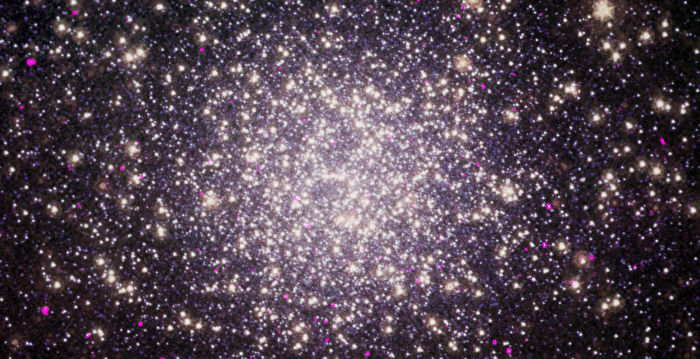Scientists Discover Spider Pulsar in Omega Centauri Destroying Nearby Stars
A recent discovery by American and Canadian astronomers has shed light on the destructive power of a spider pulsar in the Omega Centauri globular star cluster. Using data from NASA’s Chandra X-ray Observatory, the astronomers identified 11 millisecond pulsars emitting X-rays, five of which are spider pulsars concentrated near the center of Omega Centauri, located about 17,700 light-years away from Earth.
Omega Centauri, the largest globular star cluster in the Milky Way, is approximately 12 billion years old. The findings of this groundbreaking research were recently published on the NASA website.
Pulsars are neutron stars that are formed after the collapse of massive stars. Known for their extremely dense and rapidly rotating cores, these “Death Stars” emit beams of electromagnetic radiation as they spin, resembling the beams from a lighthouse. Spider pulsars specifically are binary star systems composed of a pulsar and a smaller companion star, with some able to devour their companion star, hence their namesake from certain predatory spider species.
The astronomers also pointed out that spider pulsars can be divided into two types based on the size of the destroyed companion star. The “Redback” spider pulsar has a companion star with a mass between one-tenth and one-half the mass of the sun, while the “Black Widow” spider pulsar has a companion star with a mass less than 5% of the mass of the sun.
One of the most significant findings from this study is the confirmation that the brightness of X-rays emitted by spider pulsars is related to the mass of the companion star. The larger the companion star, the more X-rays the spider pulsar emits. This discovery provides valuable insights into the relationships between pulsars and their companion stars.
Furthermore, the Chandra X-ray Observatory’s keen X-ray capabilities played a crucial role in the study of millisecond pulsars in globular clusters. Millisecond pulsars are known to be significant sources of X-rays in a small part of the sky, making them difficult to distinguish from other sources.
The use of the Chandra X-ray Observatory allowed astronomers to examine the effects of the destructive power of spider pulsars, with the observatory even sharing a short video on YouTube showing the destruction of a companion star by a spider pulsar.
The discovery of these spider pulsars in Omega Centauri has opened up new avenues for further research and increased understanding of the dynamics of these unique binary star systems. This breakthrough could potentially lead to further developments in the study of pulsars and their impact on the surrounding stellar environment.
